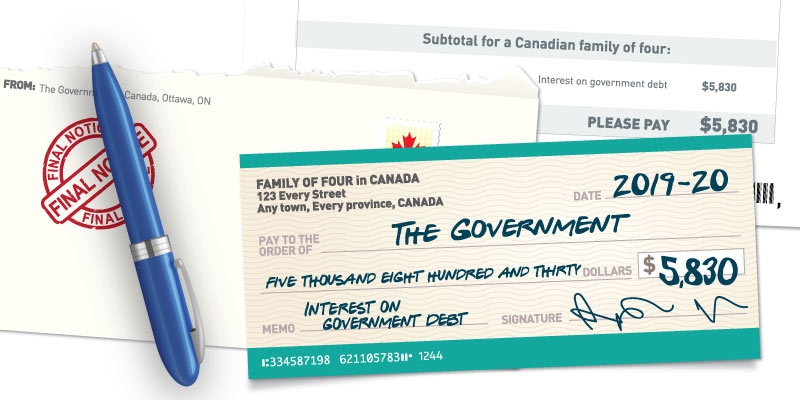Interest Costs and their Growing Burden on Canadians
— Publié le 19, February, 2020

Summary
- In recent years, deficit spending and growing government debt have become a trend for many Canadian governments. Like households, governments are required to pay interest on their debt. These interest payments consume resources that could have been used for tax relief or for health care, education, and social services.
- On aggregate, the provinces and federal government are expected to spend $54.8 billion on interest payments in 2019-20. For a Canadian family of four, interest costs will translate to an average of $5,830.
- Residents in Newfoundland & Labrador face by far the highest combined federal-provincial interest payments per person ($3,343). Ontario, Canada’s most populous province, is the next highest at $1,550 per person.
- At the federal level, the amount that will be spent on interest payments in 2019-20 ($24.4 billion) is higher than what the government expects to spend on Employment Insurance benefits ($19.3 billion) and the Canada Child Benefit ($24.1 billion).
- Ontarians are projected to spend $22.6 billion on combined federal and provincial interest costs in 2019-20, which is more than the province receives from the Canada Health Transfer (CHT) and the Canada Social Transfer (CST). Meanwhile, total expenditures on interest costs for Albertans ($6.4 billion) and British Columbians ($5.9 billion) are more than what each province expects to spend on social services this year.



